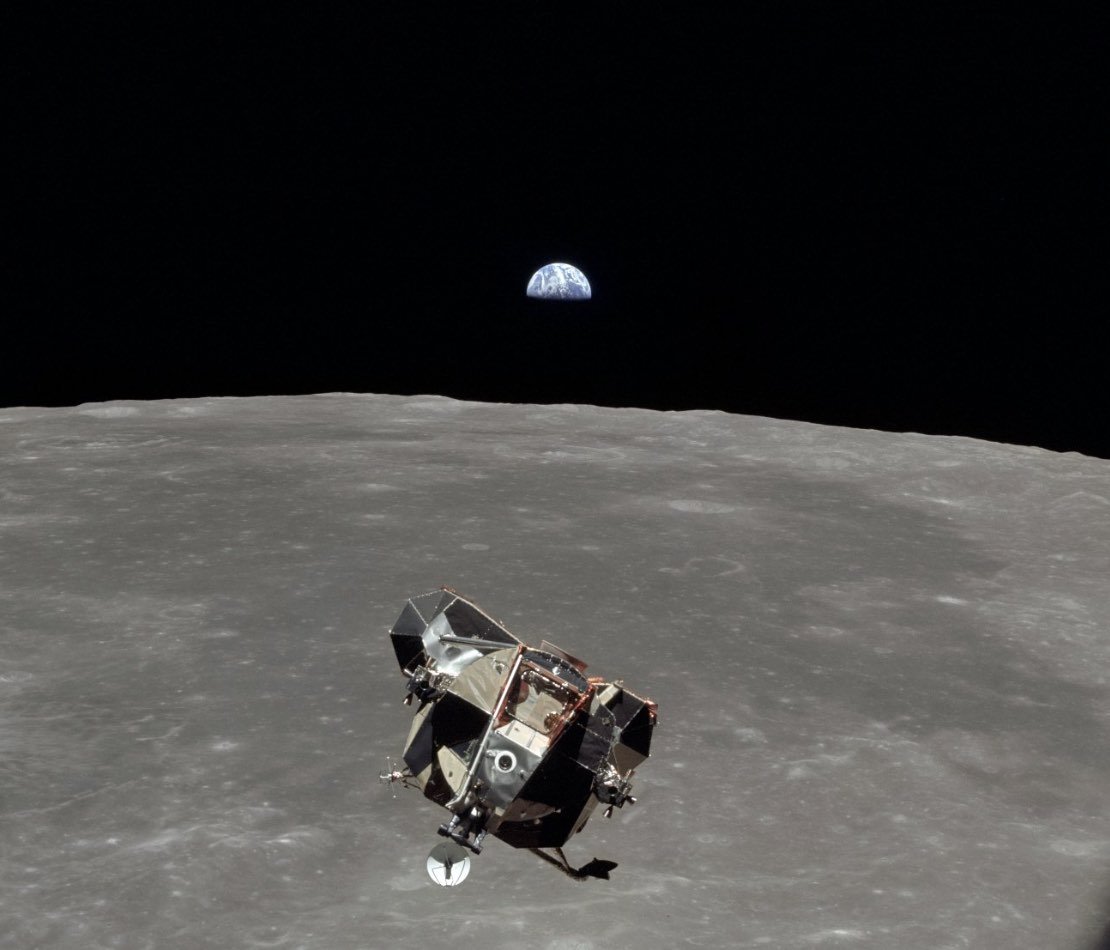“Houston. Tranquility Base here. The Eagle has landed.” These were among the famous words spoken in July 1969 by astronaut Neil Armstrong during the Apollo 11 mission, the historic effort that placed the first humans on the Moon.
“You got a bunch of guys about to turn blue,” came the nervous response from Mission Control. “We’re breathing again.”
Following their exploration of the lunar surface, on Monday, July 21, 1969, the Eagle lunar ascent stage made its departure back to the command module Columbia, and once Armstrong and fellow moonwalker Buzz Aldrin were safely on board, the pair, reunited with Michael Collins, departed again for Earth, jettisoning the Eagle ascent module, and leaving it in retrograde orbit 77 miles above the lunar surface.


More than half a century after the historic moon mission, the fate of Eagle remains unknown. Although long presumed to have crashed into the lunar surface, some have suggested another possibility: that the famous Lunar Module ascent stage could have remained in orbit and may have spent the last several decades encircling the moon.
In 2021, a paper by California-based researcher James Meador proposed this novel theory, offering simulations that indicated a “periodic variation in eccentricity of the orbit” which, along with other factors, might combine to effectively “stabilize the orbit [of Eagle] over the long term.”
“These results indicate that the ‘Eagle’ might remain in lunar orbit today,” Meador wrote in 2021, while acknowledging that the design of the Lunar Modules had not been optimized for long-term use, and that “fuel leaks might have resulted in propulsive events or even complete destruction at any time after the craft was jettisoned.”
Nonetheless, Meador said that there was still “some possibility that this machine might have reached an inert state, allowing it to remain in orbit to the present day,” adding that this remnant of one of the greatest moments in the history of space exploration might be discoverable, leaving open the possibility that humans could one day “relocate one of the most important artifacts in the history of space exploration.”
Hunting an Eagle Around the Moon
In an email to The Debrief, Meador said that “planetary radar could be used to detect a lunar satellite,” referencing a follow-up paper he presented in January 2022 at the American Institute of Aeronautics and Astronautics (AIAA) SciTech Forum that outline how it might be done.
According to Meador’s 2022 paper, several “lost” lunar satellites have been successfully recovered by radar facilities equipped for use with S-band and X-band frequency ranges. One such facility had been the telescope at Arecibo, Puerto Rico, which it was announced in 2022 would not be rebuilt following its collapse two years earlier.
However, other facilities with such capabilities exist, including the dishes at the Goldstone Observatory and the Green Bank Telescope. Based on signal-to-noise ratios, Meador says that Eagle “could be easily detectable” with these telescopes, adding that Eagle is larger than the Lunar Reconnaissance Orbiter (LRO), a spacecraft which in the past has already been characterized as “large” and “easily detectable.”
“There is no doubt that planetary radar systems are engaged in an important search for potentially destructive Near-Earth Objects,” Meador wrote in the 2022 paper.
“Nonetheless, it seems that a few hours could be diverted to search for this historic vehicle,” he added.
However, Meador’s calculations about the feasibility of the Eagle’s survival in orbit raise an intriguing possibility: could the famous Apollo 11 ascent module have already been spotted in the past, perhaps even unbeknownst to those who saw it?


The Strange Saga of “Uncorrelated Lunar Object U092196”
Over the years, there have been a significant number of instances where transient lunar phenomena and other unusual observations of Earth’s natural satellite have been made. Such an observation that may have involved an object in lunar orbit occurred on September 21, 1996, during routine scans of the lunar surface by researcher Francis Ridge of The Lunascan Project. The object was detected and observed for close to 20 seconds using a 16” telescope equipped with a CCD camera, which succeeded in obtaining images of the mysterious lunar satellite.
Dubbed “Uncorrelated Lunar Object U092196,” several potential identifications were proposed for the object, which included an illusion created by a balloon high in Earth’s atmosphere. However, analyst Lan Fleming commented, “Trajectories could be envisioned that could make such an object appear stationary relative to the moon for 20 seconds to an Earth-based observer, but the data now appears to be more in favor of an object in lunar orbit.”
Another possibility could include a meteor that had entered a temporary orbit around the moon, although Ridge also noted that if the object was indeed in lunar orbit, it was likely that it was “highly reflective, probably much smaller than it appears, and man-made.” Is it possible that Ridge and Fleming could have observed the famous Eagle ascent module?
Although it is an intriguing idea, the evidence seems to suggest otherwise. For Meador’s part, he thinks the likelihood of being able to spot Eagle using Earth-based telescopes seems unlikely.
“I’ve been told by telescope experts that spotting the Eagle optically would be impossible, due to its small size,” Meador told The Debrief in an email, adding that he would require additional time to view the Lunascan footage before he could comment on what the object Ridge filmed in 1996 might have been.
It is also worth noting that neither Ridge nor Fleming suggested the object observed by The Lunascan Project could potentially have been the Eagle spacecraft (although the time of the observation in 1996, Meador’s idea that Eagle could still be in orbit around the moon had not yet been proposed).
The question of what the object was that Ridge and Fleming observed is still intriguing, whether or not it had anything to do with a potential sighting of the long-lost Apollo 11 ascent module. However, the possibility that one of the most famous spacecraft in all history might still be lurking in lunar orbit is equally fascinating; in the event that it was ever retrieved, its recovery could also help provide a wealth of useful information.
“The Eagle is perhaps one of the most important technological artifacts of the modern age,” Meador says. Despite the remoteness of the possibility of its survival in orbit, “relocating it would be a breathtaking discovery,” he says, “and its present condition and properties would offer many possibilities for study.”
Micah Hanks is the Editor-in-Chief and Co-Founder of The Debrief. He can be reached by email at micah@thedebrief.org. Follow his work at micahhanks.com and on Twitter: @MicahHanks.

